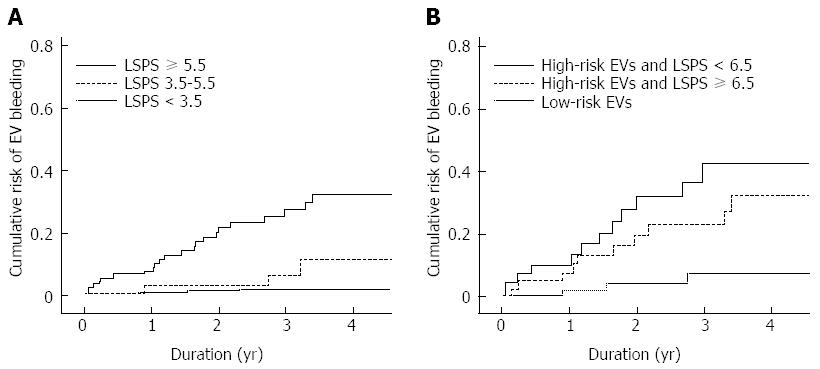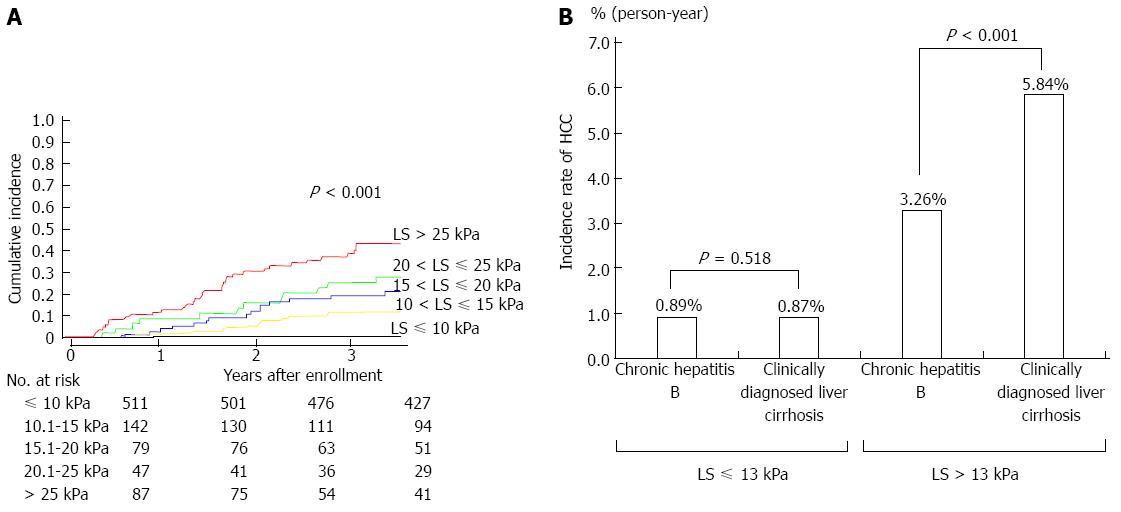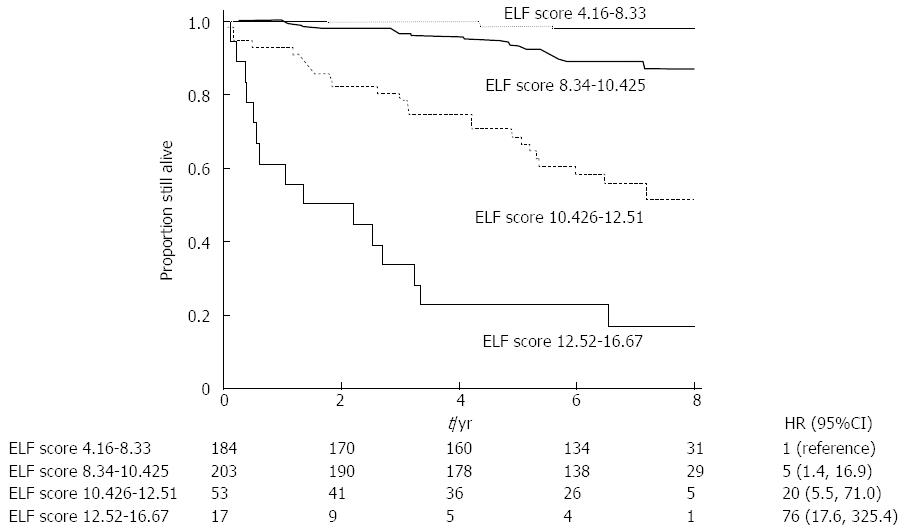Copyright
©2014 Baishideng Publishing Group Co.
World J Gastroenterol. Mar 14, 2014; 20(10): 2613-2623
Published online Mar 14, 2014. doi: 10.3748/wjg.v20.i10.2613
Published online Mar 14, 2014. doi: 10.3748/wjg.v20.i10.2613
Figure 1 Cumulative incidence rate of variceal bleeding based on liver stiffness measurement-spleen diameter to platelet ratio score values.
Reproduced with permission from Kim et al[45]. A: Among patients with liver cirrhosis related to hepatitis B virus, those with higher LSPS values had significantly higher cumulative incidences of bleeding from EVs during the follow-up period; n = 577; B: Among patients with high-risk EVs, patients with LSPS ≥ 6.5 had higher risks for variceal bleeding; n = 150. LSPS: Liver stiffness measurement-spleen diameter to platelet ratio score; EV: Esophageal varice.
Figure 2 Cumulative incidence of hepatocellular carcinoma.
A: The cumulative incidence of hepatocellular carcinoma (HCC) showed a step-wise increase according to the stratified liver stiffness (LS) measurement; n = 866. Reproduced with permission from Masuzaki et al[49]; B: Patients with higher LS values had significantly higher risks of developing HCC. Transient elastography (TE) and clinical criteria produced conflicting results for diagnosing liver cirrhosis. Patients diagnosed with liver cirrhosis based on TE findings were at higher risk of developing HCC than those diagnosed by clinical criteria (3.26% vs 0.87% per person-year); n = 1110. Reproduced with permission from Jung et al[33].
Figure 3 Kaplan-Meier analysis of liver-related events in patients stratified according to enhanced liver fibrosis scores.
Reproduced with permission from Parkes et al[58]. The study population was stratified into four groups according to the enhanced liver fibrosis (ELF) score for precise assessment of the risks of developing liver-related events (LREs). LREs showed a graded response according to the stratified ELF score groups. Patients with higher ELF scores had significantly higher risks of having LREs; n = 457.
- Citation: Kang W, Kim SU, Ahn SH. Non-invasive prediction of forthcoming cirrhosis-related complications. World J Gastroenterol 2014; 20(10): 2613-2623
- URL: https://www.wjgnet.com/1007-9327/full/v20/i10/2613.htm
- DOI: https://dx.doi.org/10.3748/wjg.v20.i10.2613











